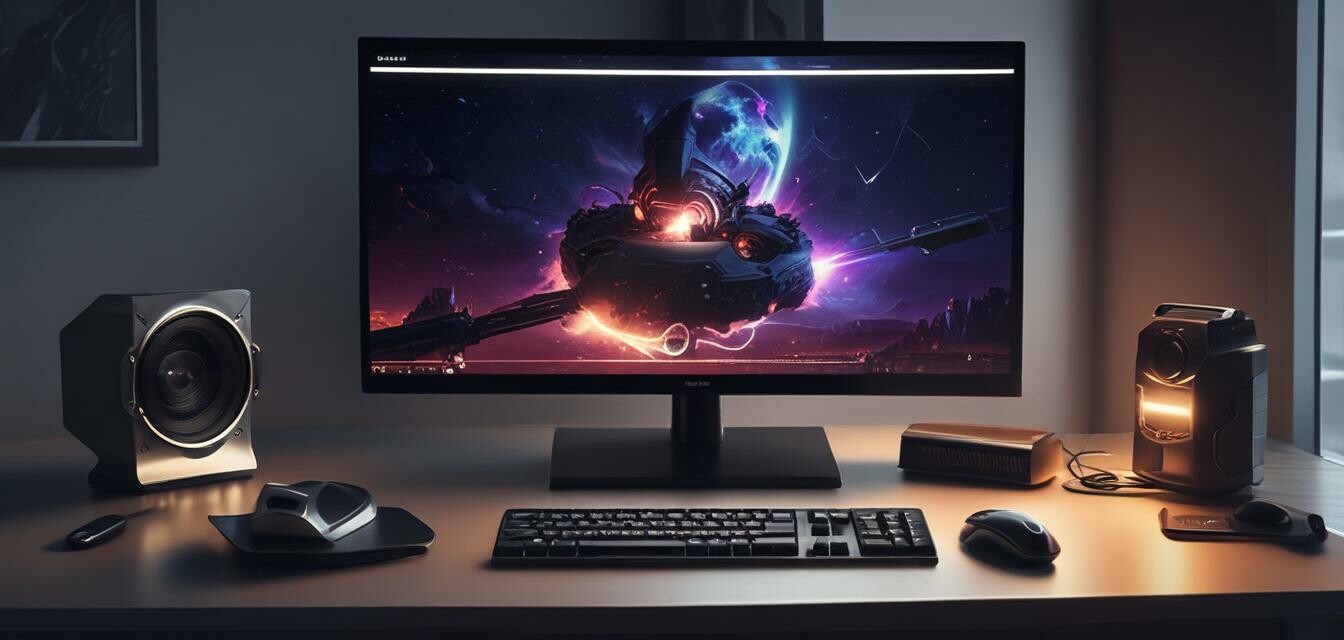
The Integration of AI in Gaming Desktops
Artificial Intelligence (AI) has been making significant waves across various industries, and the gaming sector is no exception. As technology progresses, AI is beginning to weave itself into the fabric of gaming desktops, enhancing the user experience and redefining gaming performance. In this article, we will explore how AI is not only optimizing gaming desktops but also transforming the entire user interaction with games.
Key Takeaways
- AI improves gaming performance through real-time optimization.
- AI-driven graphics enhance visual fidelity and realism.
- Machine learning assists in personalized gaming experiences.
- Smart resource management allows for seamless multitasking.
- AI helps in predictive maintenance for gaming desktops.
What is AI's Role in Gaming Desktops?
AI technology in gaming desktops serves several functions that improve both gameplay and overall performance. Here is a detailed look at the significant influences of AI:
- Real-time performance optimization: AI algorithms analyze gameplay data and adjust system settings to ensure smooth performance.
- Enhanced graphics rendering: AI-powered tools can upscale graphics, providing players with enriched visual experiences.
- Personalized user experiences: Machine learning models analyze player behavior to customize settings and suggest games that match preferences.
- Resource management: AI can allocate CPU and GPU resources dynamically, ensuring that the system runs efficiently even during intensive tasks.
- Predictive maintenance: AI can monitor hardware conditions and forewarn users about potential issues before they become serious problems.
AI Enhancements in Graphics and Performance
One of the most exciting aspects of AI integration in gaming desktops is the impact on graphics and performance:
| AI Functionality | Description |
|---|---|
| Dynamic Resolution Scaling | AI adjusts the resolution of games in real-time to maintain performance without sacrificing too much visual quality. |
| Image Recognition | AI can improve how textures and elements are recognized and rendered, resulting in richer environments. |
| Frame Rate Optimization | AI algorithms dynamically manage frame rates based on the current game intensity, providing smoother gameplay. |
| VR and AR Capabilities | AI is essential for rendering immersive virtual and augmented reality experiences by efficiently managing rendering processes. |
How AI Personalizes the Gaming Experience
Machine learning capabilities allow gaming desktops to analyze player habits and preferences:
- Game Recommendations: AI systems can suggest games based on your gameplay history and interests.
- Control Customization: AI can auto-adjust controls based on player preferences, making it easier for users to adapt.
- Adaptive Difficulty Levels: AI can modify game challenges in real-time, ensuring optimal difficulty for an engaging experience.
AI in Managing System Resources
Effective resource management is crucial for high-performance gaming:
| Resource Management Feature | Benefit |
|---|---|
| Automated CPU/GPU Load Balancing | Ensures that workloads are distributed evenly to prevent overheating and slowdowns. |
| Energy Efficiency Analysis | AI analyzes energy consumption patterns and recommends settings that minimize power without sacrificing performance. |
| Cooling System Optimization | AI can manage cooling systems proactively, ensuring your desktop remains cool during long gaming sessions. |
The Future of Gaming Desktops with AI
As AI technology continues to evolve, gaming desktops will likely see advancements that go beyond what we currently imagine:
- Augmented AI Gaming: Where non-player characters (NPCs) can respond and learn from player actions in a more human-like manner.
- Advanced Voice Recognition: Control your gaming environment using voice commands integrated with AI systems.
- Full Immersion Experiences: Enhancing VR interactions with AI could create environments that respond to even the slightest user input.
Conclusion
The integration of AI in gaming desktops has changed how we engage with our favorite digital worlds. From optimizing performance to creating personalized experiences, AI caters to both casual and competitive gamers, ensuring a top-notch gaming session every time. With continuing advancements, we can only expect even greater changes in the way we game—making it all the more essential to stay informed about the latest in gaming technology.
Pros
- Enhanced gaming performance through real-time optimization.
- Improved graphics rendering and detail.
- Personalized game experiences tailored to player preferences.
- Efficient resource allocation for smoother multitasking.
- Predictive maintenance to prolong hardware life.
Cons
- Potential increased costs for AI-enabled systems.
- Complexity may frustrate users not tech-savvy.
- Possible over-reliance on AI for gameplay decisions.
By investing in gaming desktops enhanced with AI, players can enjoy a superior gaming experience that is both engaging and efficient. To explore more about gaming gear, check out our guide on gaming PC desktops and find what suits your gaming style the best!
